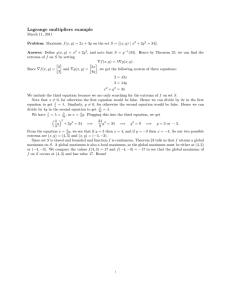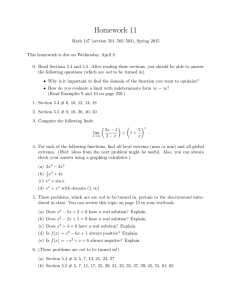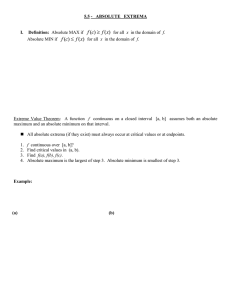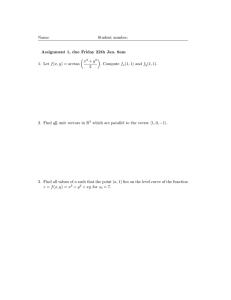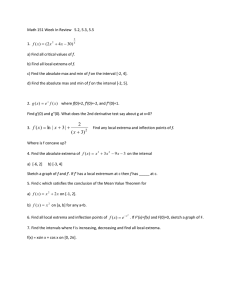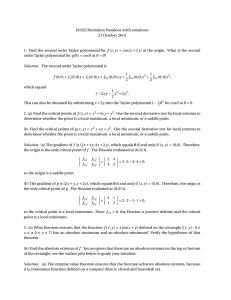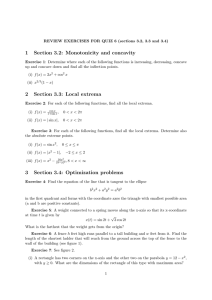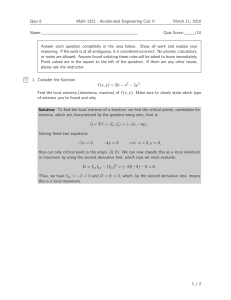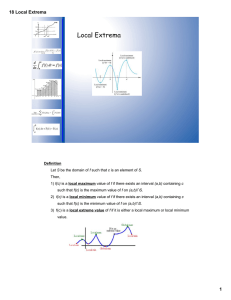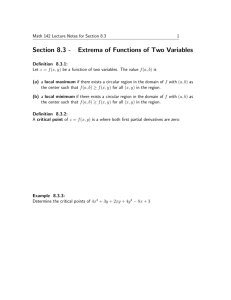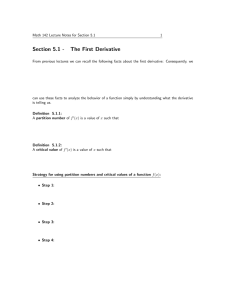18.022 Recitation Handout 27 October 2014 f g
advertisement
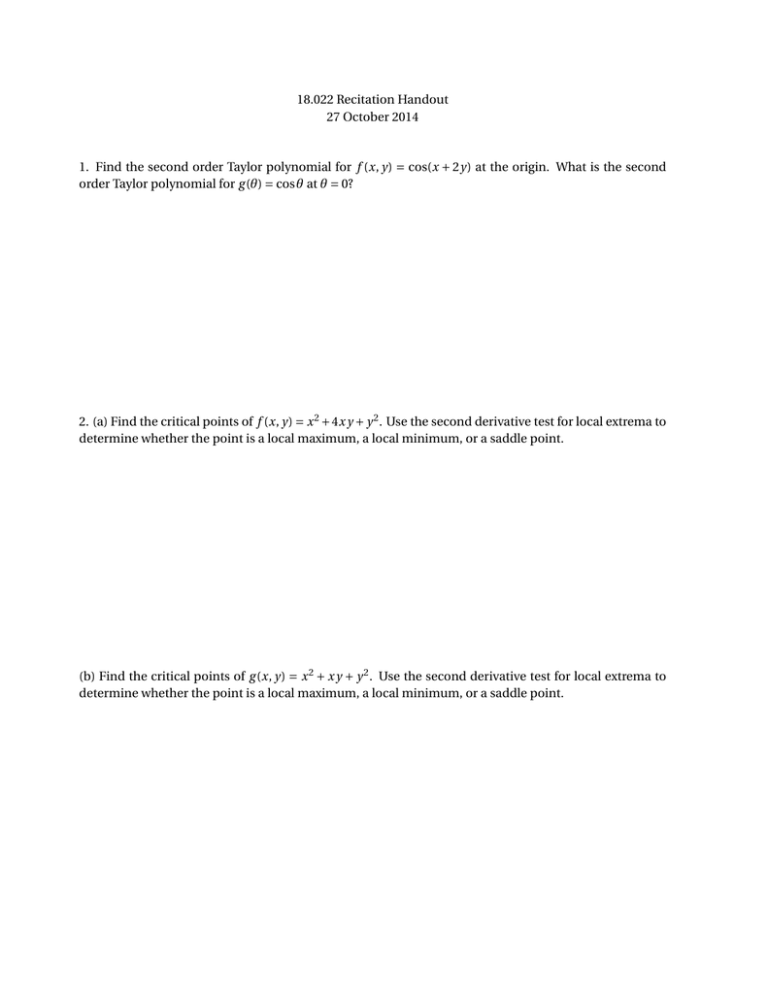
18.022 Recitation Handout
27 October 2014
1. Find the second order Taylor polynomial for f (x, y) = cos(x + 2y) at the origin. What is the second
order Taylor polynomial for g (θ) = cos θ at θ = 0?
2. (a) Find the critical points of f (x, y) = x 2 + 4x y + y 2 . Use the second derivative test for local extrema to
determine whether the point is a local maximum, a local minimum, or a saddle point.
(b) Find the critical points of g (x, y) = x 2 + x y + y 2 . Use the second derivative test for local extrema to
determine whether the point is a local maximum, a local minimum, or a saddle point.
3. (a) What theorem ensures that the function f (x, y) = x sin(x + y) defined on the rectangle {(x, y) : 0 ≤
x ≤ π, 0 ≤ y ≤ 7} has an absolute maximum and an absolute minimum? Verify the hypotheses of that
theorem.
(b) Find the absolute extrema of f . You are given that there are no absolute extrema on the top or bottom
of the rectangle; see the surface plot below to guide your intuition.

